Destructive Philota Mushroom (Pholiota destruens/Pholiota populnea/Hemipholiota populnea)
Looking at Destructive Philota Mushrooms on a downed Cottonwood in Southwestern Colorado
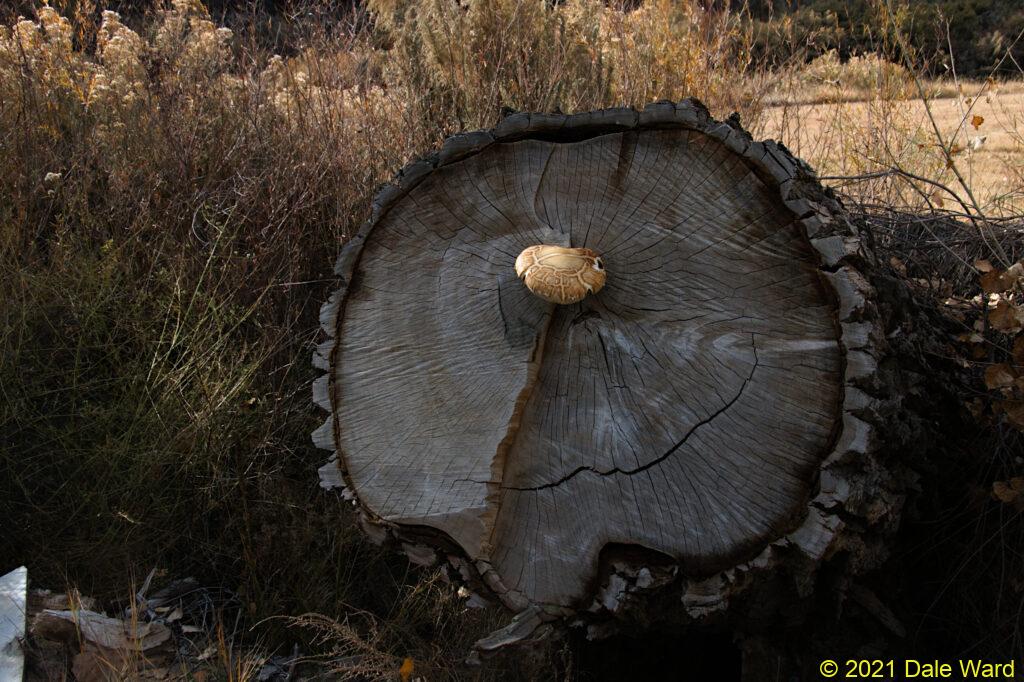 _Pholiota destruens_ mushroom growing from an enormous Cottonwood log.
_Pholiota destruens_ mushroom growing from an enormous Cottonwood log.
A couple of days ago (mid-November, 2021), we were driving on a friend’s ranch in McElmo Canyon. We came across a series of enormous Cottonwood logs. And growing from the center of these logs were these big, beautiful mushrooms.
We stopped the truck to have a closer look.
There were five or six large Cottonwood logs. The logs were old and dry, and were starting to crack and split in the center. Most of the logs had one or two enormous mushrooms sprouting from the splits near the center of the logs.
The model in the photo below helps to illustrate both the size of the logs and the mushrooms.
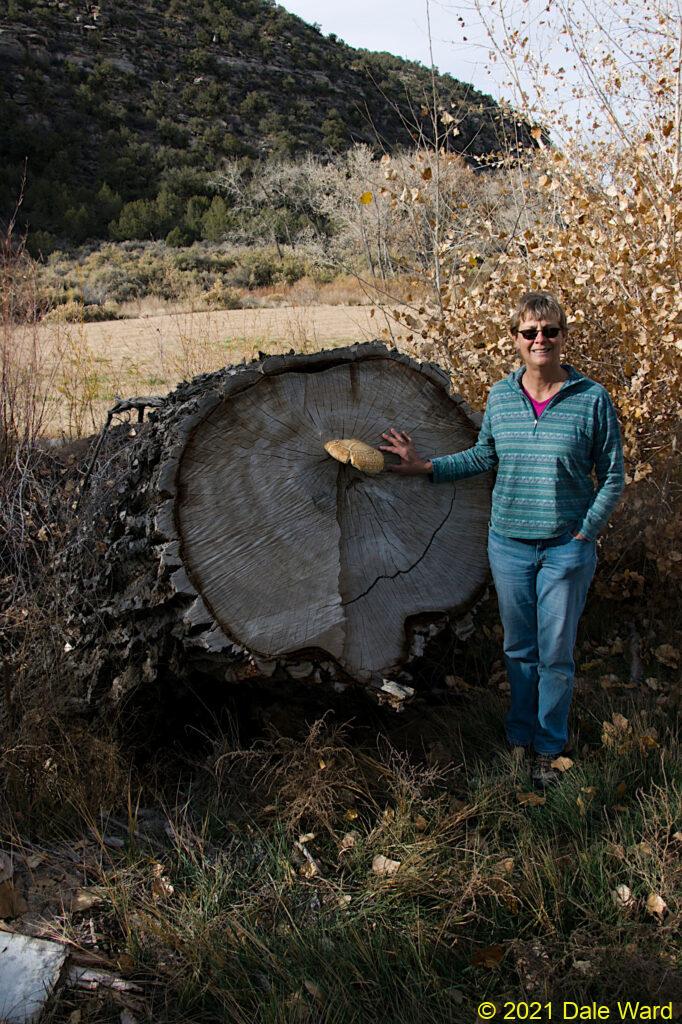 Model with hand next to _Pholiota destruens_ mushroom.
Model with hand next to _Pholiota destruens_ mushroom.
As an aside, I like to travel with models whenever possible. It’s one of the many benefits of being a famous nature/fashion blogger. And having a model along certainly paid off in this trip.
The surface of the mushrooms was a buff color, with pale cracks showing through the buff. Looking at the tops of the mushrooms reminded me of looking at the cracks in freshly baked loaves of bread.
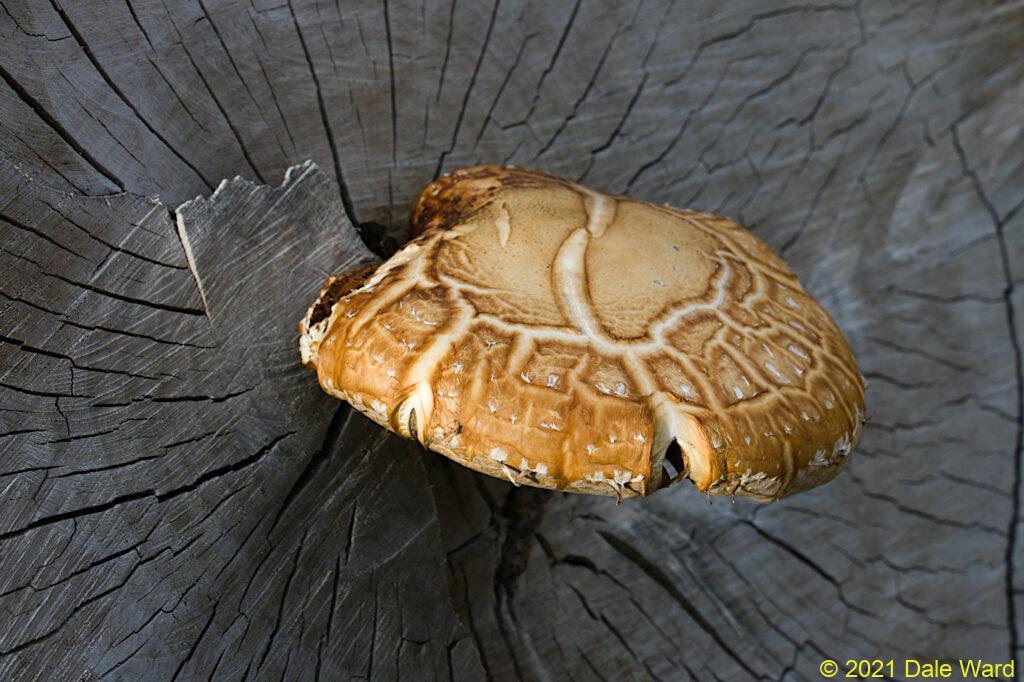 Top of a _Pholiota destruens_ mushroom as it emerges from a crack in the center of a Cottonwood log.
Top of a _Pholiota destruens_ mushroom as it emerges from a crack in the center of a Cottonwood log.
At first I thought these mushrooms were a type of Hawkswing Mushroom (Sarcodon imbricatus), as in this post. But the underside of these mushrooms had definite gills, not the “teeth” that Hawkswing Mushrooms have.
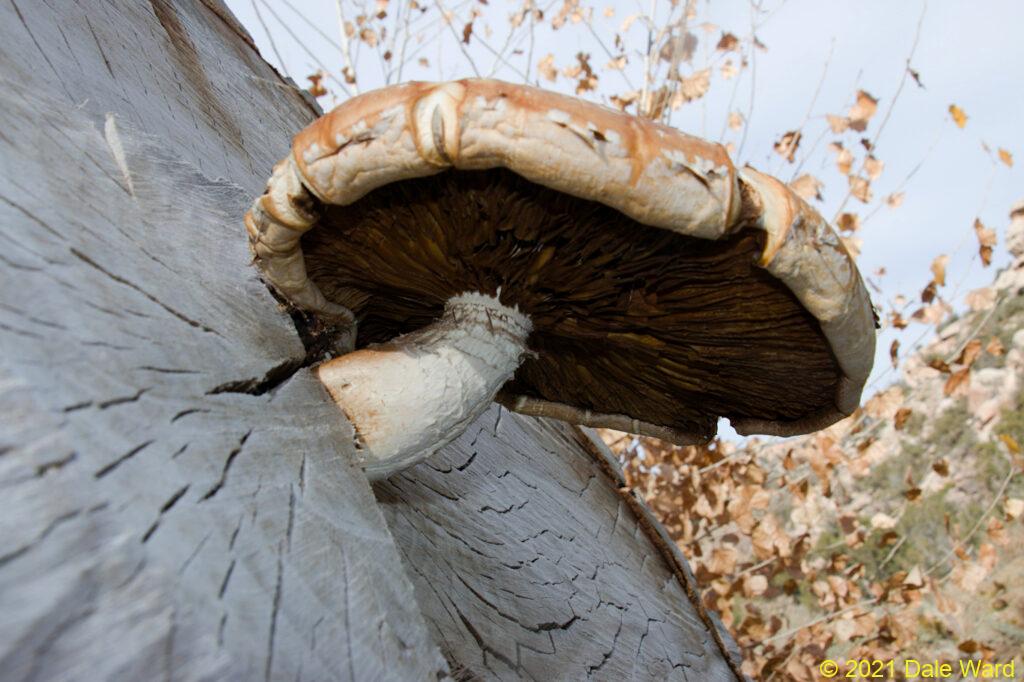 Underside of _Pholiota destruens_ mushroom growing from Cottonwood log. You can see the dark gills in this photo.
Underside of _Pholiota destruens_ mushroom growing from Cottonwood log. You can see the dark gills in this photo.
The caps of the mushrooms were hard and dry, perhaps because the mushrooms were old. The stems of the mushrooms typically emerged from near the center of the log and grew parallel to the ground. The stems would make an abrupt 90 degree turn just before the Mushroom’s cap, so that the cap grew more or less parallel to the ground. The stems were very tough and fibrous.
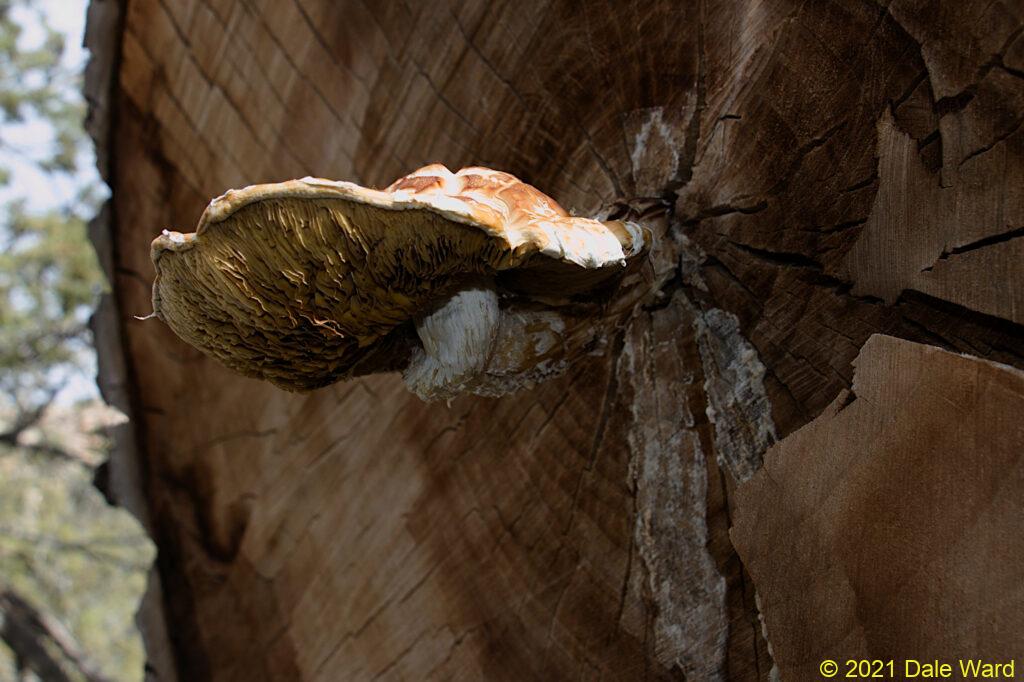 A view looking up at the bottom of “Destructive Pholiota” growing out of a Cottonwood log. The ggills on this older mushroom are turning pale near the edge of the cap. I think that some of the pale markings on the wood near the mushroom’s emergence location are fungal hyphae in the wood.
A view looking up at the bottom of “Destructive Pholiota” growing out of a Cottonwood log. The ggills on this older mushroom are turning pale near the edge of the cap. I think that some of the pale markings on the wood near the mushroom’s emergence location are fungal hyphae in the wood.
The older mushrooms were raggedy-looking. I’m not sure if a Squirrel of something had been eating them, or if they were just falling apart as they aged.
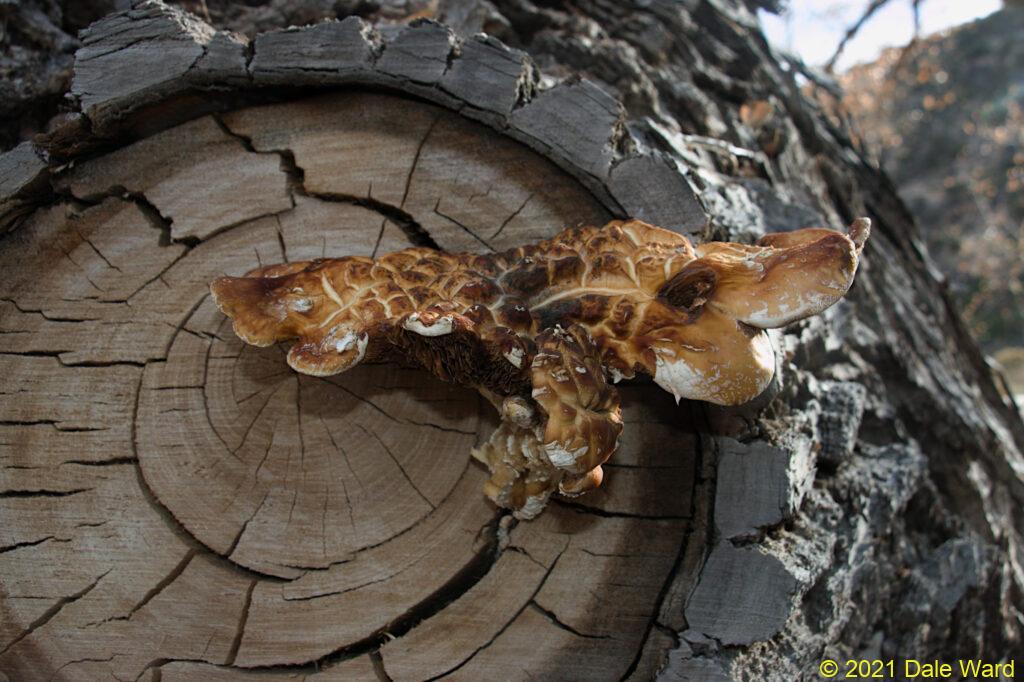 An older _Pholiota destruens_ mushroom. The buff scales on its upper surface are turning black.
An older _Pholiota destruens_ mushroom. The buff scales on its upper surface are turning black.
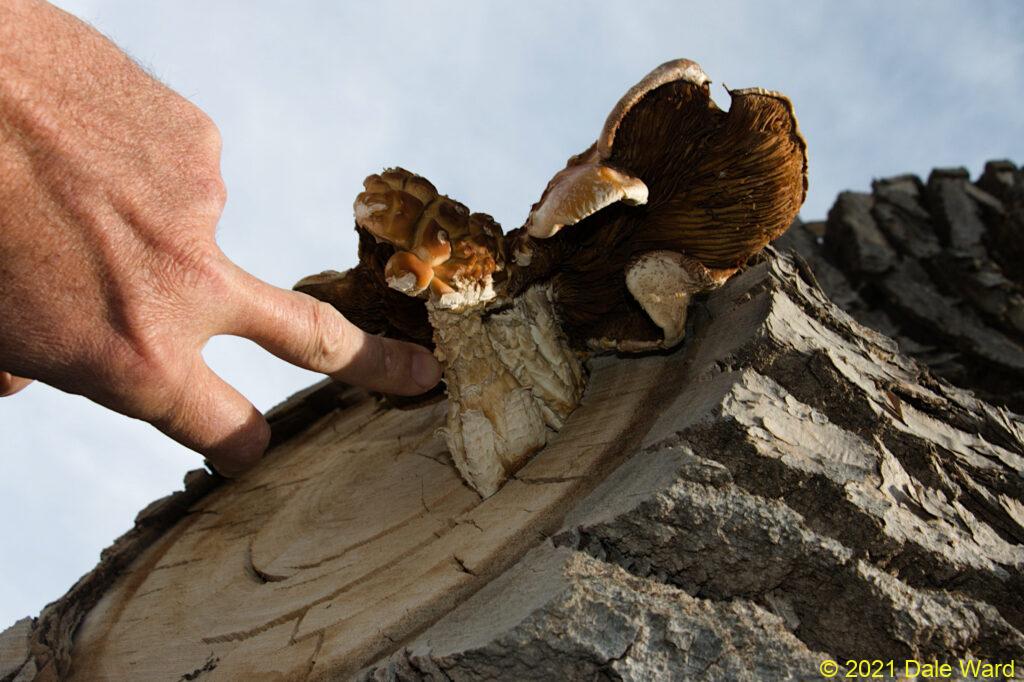 Underside view of _Pholiota destruens_, showing the dark gills. The gills are light on young mushrooms, turn this dark color as the mushroom ages, then become pale again as the mushroom dries and curls up.
Underside view of _Pholiota destruens_, showing the dark gills. The gills are light on young mushrooms, turn this dark color as the mushroom ages, then become pale again as the mushroom dries and curls up.
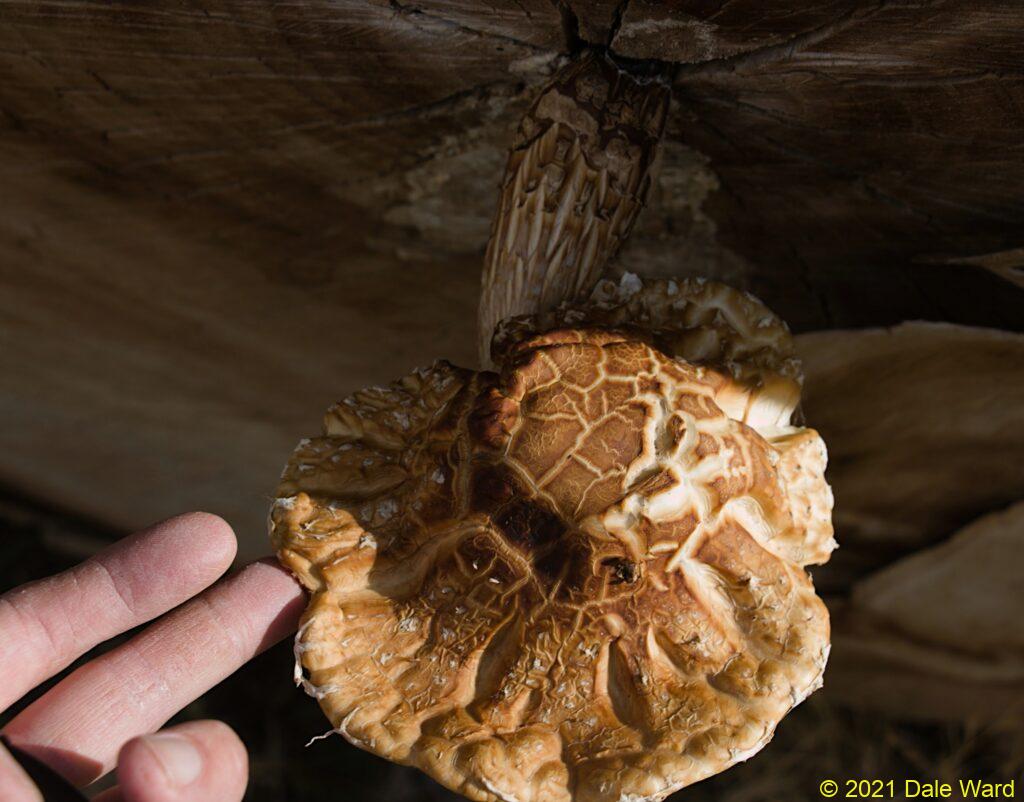 Top view of “Destructive Pholiota”, with my fingers for scale. The vertical face of the Cottonwood log is in the background, and the mushroom stem is growing out parallel to the ground. The stem turns up 90 degrees just before arriving at the cap.
Top view of “Destructive Pholiota”, with my fingers for scale. The vertical face of the Cottonwood log is in the background, and the mushroom stem is growing out parallel to the ground. The stem turns up 90 degrees just before arriving at the cap.
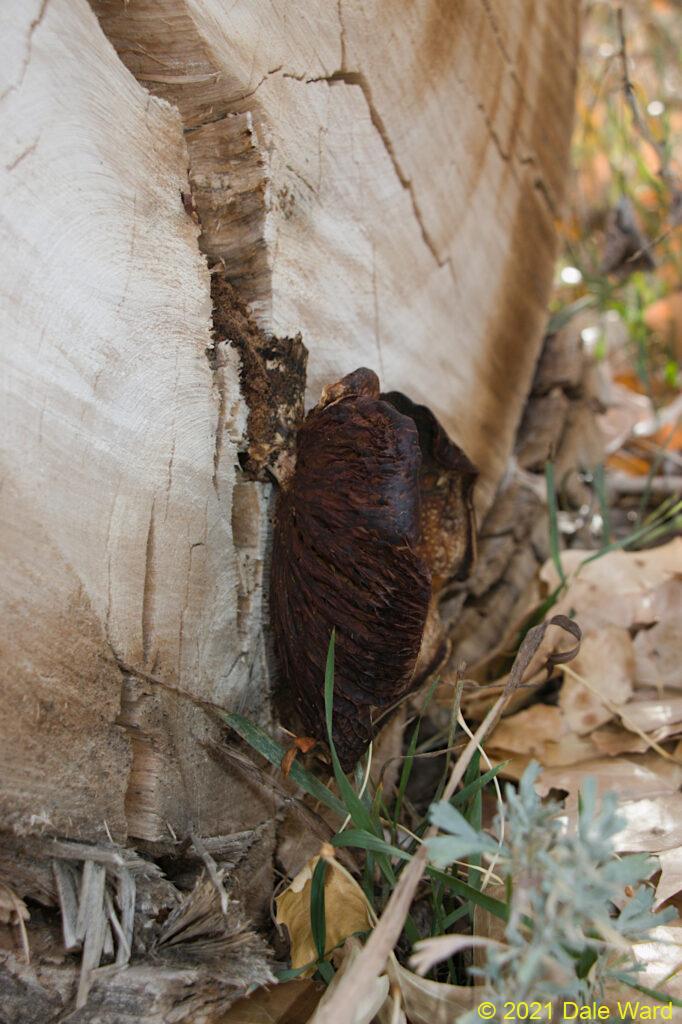 _Pholiota destruens_ mushroom, curling as it dries. We’re looking at the gills of the mushroom in this photo.
_Pholiota destruens_ mushroom, curling as it dries. We’re looking at the gills of the mushroom in this photo.
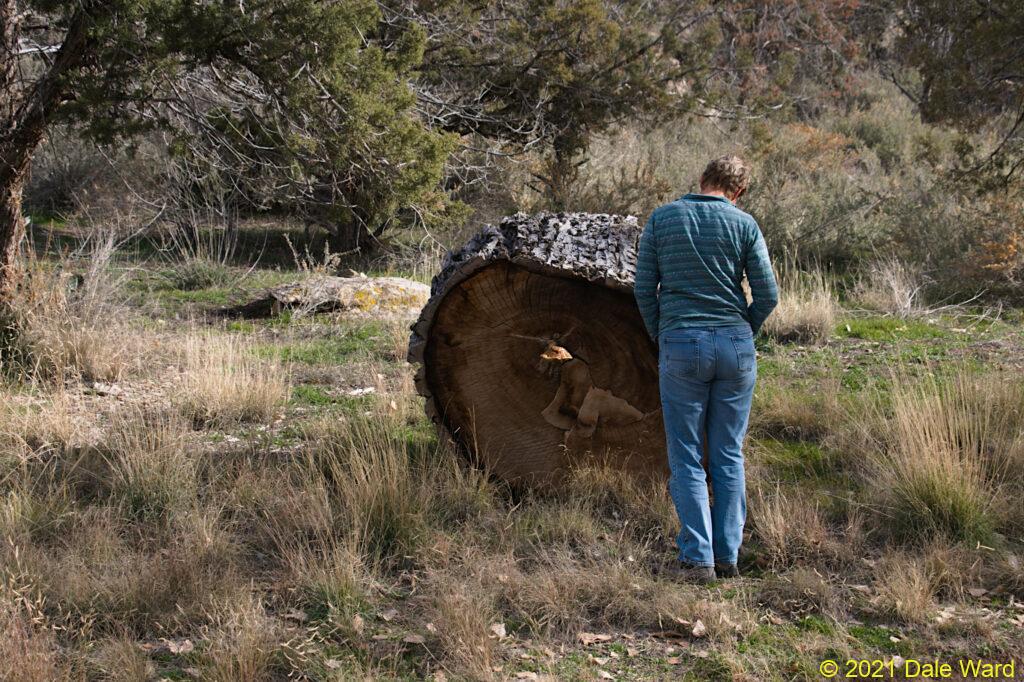 Model looking at _Pholiota destruens_ growing from an enormous Cottonwood log. The mushroom is the light object just above the center of the log.
Model looking at _Pholiota destruens_ growing from an enormous Cottonwood log. The mushroom is the light object just above the center of the log.
I think these mushrooms are Pholiota destruens, which was renamed to Pholiota populinea, and then, most recently, to Hemipholiota populnea. I’ve stuck with calling it by the old name because that’s the name in the guide books…
One of the common names I found for it was the “Destructive Philota”. As I understand it, this fungus is called that because the fungus eats the dead wood of Aspens and Cottonwoods. Here’s what I don’t get…most wood fungi are saprophytes…feeding on dead organic material. Calling this fungus “Destructive Philota” seems a little bit like saying “This is wet water.”
But hey, I digress.
These mushrooms are supposed to be edible, but are not supposed to taste very good. You can eat them, but they are not food.
There are a lot of things that I wonder about these mushrooms. For instance, at what point in the tree’s life/death did the fungal hyphae start to grow?
The reason I wonder is that most of the mushrooms emerged at or near the center of the logs. Did the hyphae start growing in the tree when it was still standing, and grow up through the center of the tree, thus explaining the positioning of the mushrooms near the center of the logs? In other words, are the mushrooms all part of a single hyphal mass that were separated when the tree was cut?
Or did the fungal spores infect the ends of the logs after the tree was cut, so each mushroom is evidence of a separate “seeding”?
And why are there only one or two mushrooms coming from each trunk? There is a lot of wood in each log. Is all of it ‘taken’ by a single fungus? Are fungi ‘territorial’, with only one hyphal mass per tree?
So many questions.
Sources: